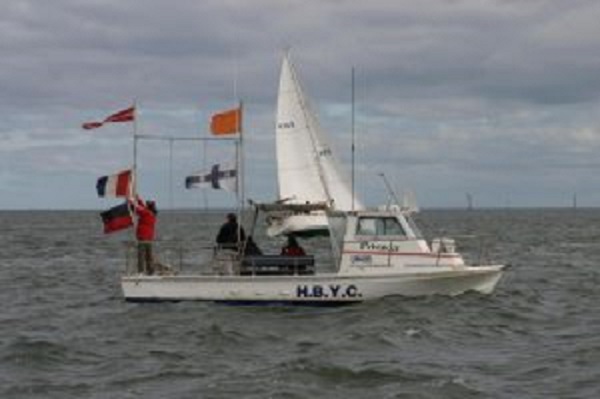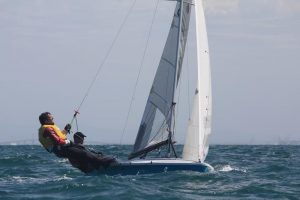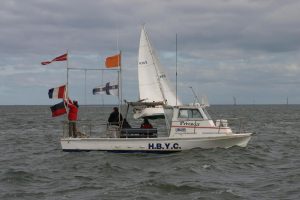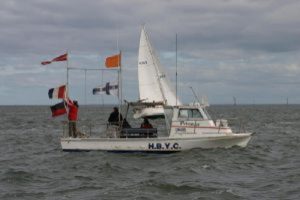
Start Before the Start – Get to the racecourse at least 45 minutes before the first gun, once you arrive, there are four essential things you must do.
-
Gather your wind readings
Sail upwind and tweak sails and rig for speed, and figure out the wind pattern.
The key is to watch the compass and determine a range of headings on each tack.
If the wind is shifting through 20 degrees, you should also try to determine the timing of the shifts. Getting the feel for a pattern will help you make educated decisions while racing.
You should also be looking for other important tactical factors, such as current, potential geographic shifts, and varying wind conditions across the racecourse.
-
Find your fast settings
Firstly, sail upwind. When tuning up with the good teams (or a designated tuning partner), compare your relative height and speed.
Make sure you’re set up according to your sailmaker’s tuning guide, experiment with different settings, and ask your tuning partners how they’re set up if they’re beating you.
While sailing downwind, try different angles and techniques to figure out what is fast for the conditions.
The benefit of tuning before the race is it allows you to gain confidence in your settings and boat speed, freeing you up to look around while racing.

-
Research the starting line
It’s important to do more starting-line research than you think you should.
Sail to the committee boat end of the line and sight through the race committee flag, picking out an object on land that’s in line with both ends.
Then, run the line using this sight to get a feel for what it looks like to be right on the line.
The longer the line is, the greater the illusion you’re on the course side when you’re actually not.
During one of your runs, time how long it takes to sail from one end to the other, next put the bow into the wind a few times to check the line bias and to track the true-wind direction.

-
Double-check before the countdown
Do a brief upwind sail again to see if anything has changed.
Check your compass again and make sure the boat still feels right for the conditions.
Visualize how the fleet will come off the line at that angle and factor that into your final game plan.



